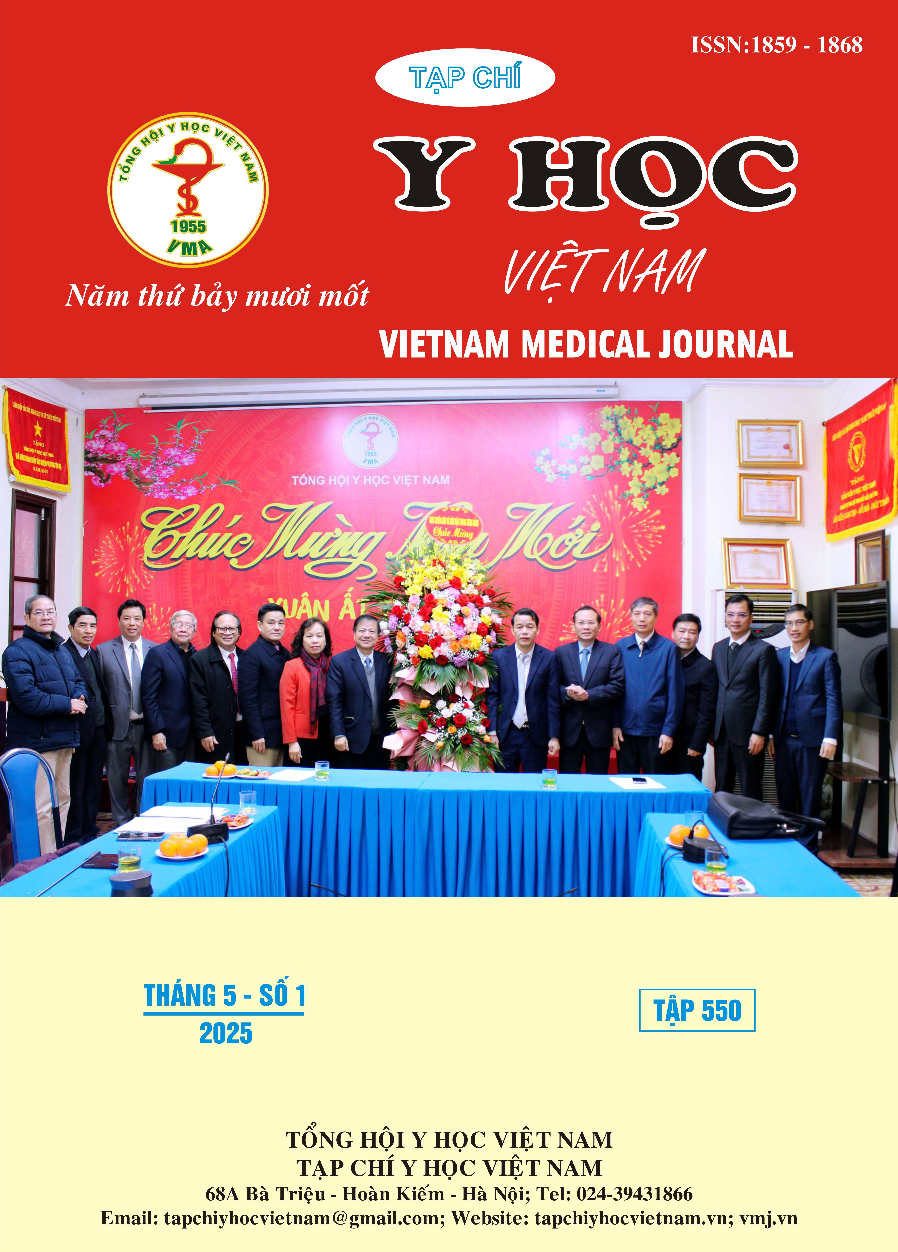ENDOSCOPIC FRONTAL SINUS SURGERY USING 3D PREOPERATIVE PLANNING RECONSTRUCTION SOFTWARE
Main Article Content
Abstract
Background: Endoscopic frontal sinus surgery is considered as the most difficult and challenging procedure for rhinologists due to the complex and anatomic variants of the frontal sinus. Scopis Building Blocks converts radiological data into an understandable 3D anatomical pictures. The surgeons are able to draw building blocks and frontal sinus drainage pathway on the CT scan itself in all three dimensions, then they can perform the surgery with additional safety and orientation for a complete dissection and optimal results. Methods: A case series reports of 86 frontal recesses of 51 chronic frontal sinusitis patients, who underwent endoscopic frontal sinus surgery at Ear Nose Throat hospital of Ho Chi Minh city. Scopis Building Blocks software was used to indentified the frontal cells and the frontal drainage pathway and applied to endoscopic frontal sinus surgery. Results: Agger nasi cell (ANC) presented in 98,8% of cases. The frontal cells prevalence was as follows: supra agger cells (SAC) 19,8%, supra agger frontal cell (SAFC) 8,1%, supra bulla cell (SBC) 74,4%, supra bulla frontal cell (SBFC) 15,1%, supraorbital ethmoid cell (SOEC) 12,8%, and frontal septal cell (FSC) 16,3%. Regarding anteriorly based cells, the most common drainage pathway in relation to frontal cells was posterior to ANC (57,7%), posterior to SAC (52,9%), medial to SAFC (71,4%). Regarding posteriorly based cells, the most common drainage pathway in relation to frontal cells was anterior to SBC (100%), anterior to SBFC (84,6%), anterior to SOEC (100%). The frontal cells and frontal drainage pathways were indentified in all cases intra-operatively in accordance with preoperatively software analysis results. Instruments were placed to dissect the frontal cells completely. No major complications were noted in our study. Conclusion: The Scopis Building Blocks software is a very useful tool to identify the frontal cells and frontal sinus drainage pathway types in relation to frontal cells preoperatively. It helps surgeons know exactly where to place the instrument to perform the dissection safely and effectively.
Article Details
Keywords
IFAC 2016, frontal cells, frontal sinus drainage pathway, Scopis Building Blocks planning software, endoscopic frontal sinus surgery
References
2. Wormald PJ. Surgery of the frontal recess and frontal sinus. Rhinology. Jun 2005;43(2):82-5.
3. Kountakis SE, A B, Draf W. The Frontal Sinus. Springer; 2005.
4. Wormald PJ. Endoscopic Sinus Surgery: Anatomy, Three-dimensional Reconstruction, and Surgical Technique. Thieme Medical Publishers; 2005.
5. DelGaudio JM, Hudgins PA, Venkatraman G, Beningfield A. Multiplanar computed tomographic analysis of frontal recess cells: Effect on frontal isthmus size and frontal sinusitis. Archives of Otolaryngology–Head & Neck Surgery. 2005; 131(3): 230-235. doi:10.1001/archotol.131. 3.230
6. Lê Huy Hoàng. Đánh giá hiệu quả ứng dụng phần mềm Scopis Building Blocks trong phẫu thuật nội soi ngách trán. Luận văn tốt nghiệp chuyên khoa II trường đại học y khoa Phạm Ngọc Thạch. 2018;
7. Sommer F, Hoffmann TK, Harter L, et al. Incidence of anatomical variations according to the International Frontal Sinus Anatomy Classification (IFAC) and their coincidence with radiological sings of opacification. European archives of oto-rhino-laryngology : official journal of the European Federation of Oto-Rhino-Laryngological Societies (EUFOS) : affiliated with the German Society for Oto-Rhino-Laryngology - Head and Neck Surgery. Nov 2019;276(11):3139-3146. doi:10.1007/s00405-019-05612-4
8. Choby G, Thamboo A, Won TB, Kim J, Shih LC, Hwang PH. Computed tomography analysis of frontal cell prevalence according to the International Frontal Sinus Anatomy Classification. International forum of allergy & rhinology. Jul 2018;8(7):825-830. doi:10.1002/alr.22105
9. Fokkens WJ, Lund VJ, Hopkins C, et al. European Position Paper on Rhinosinusitis and Nasal Polyps 2020. Rhinology. Feb 20 2020; 58(Suppl S29):1-464. doi:10.4193/ Rhin20.600


